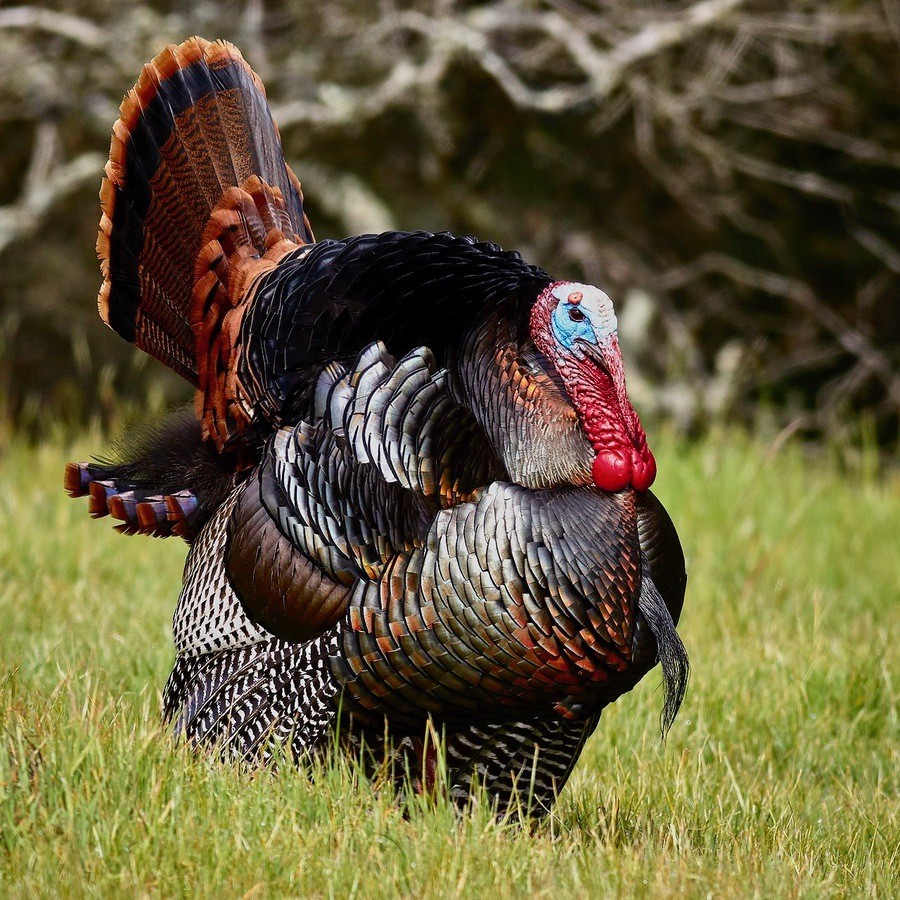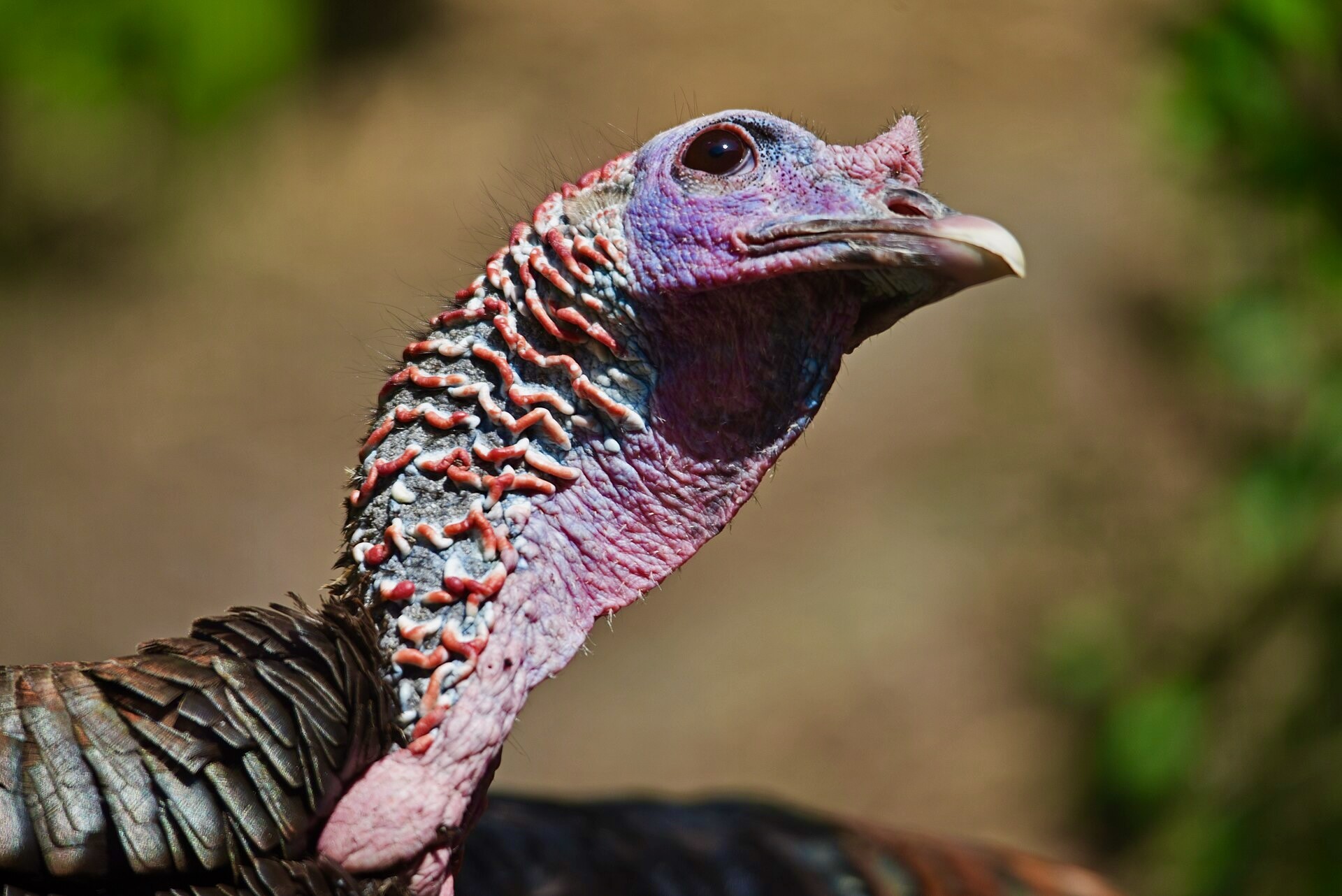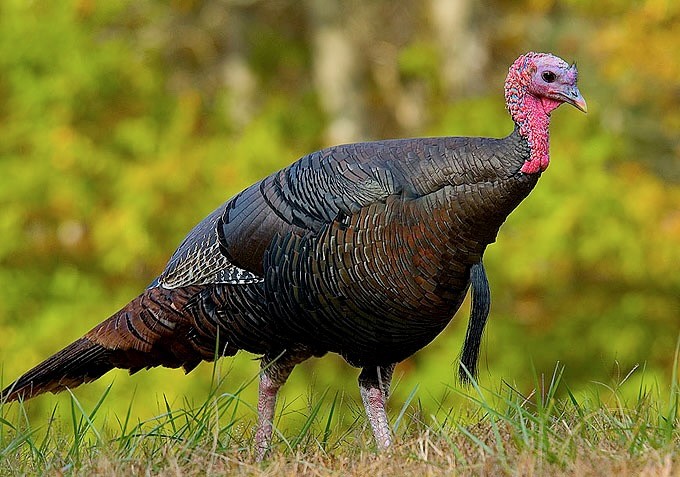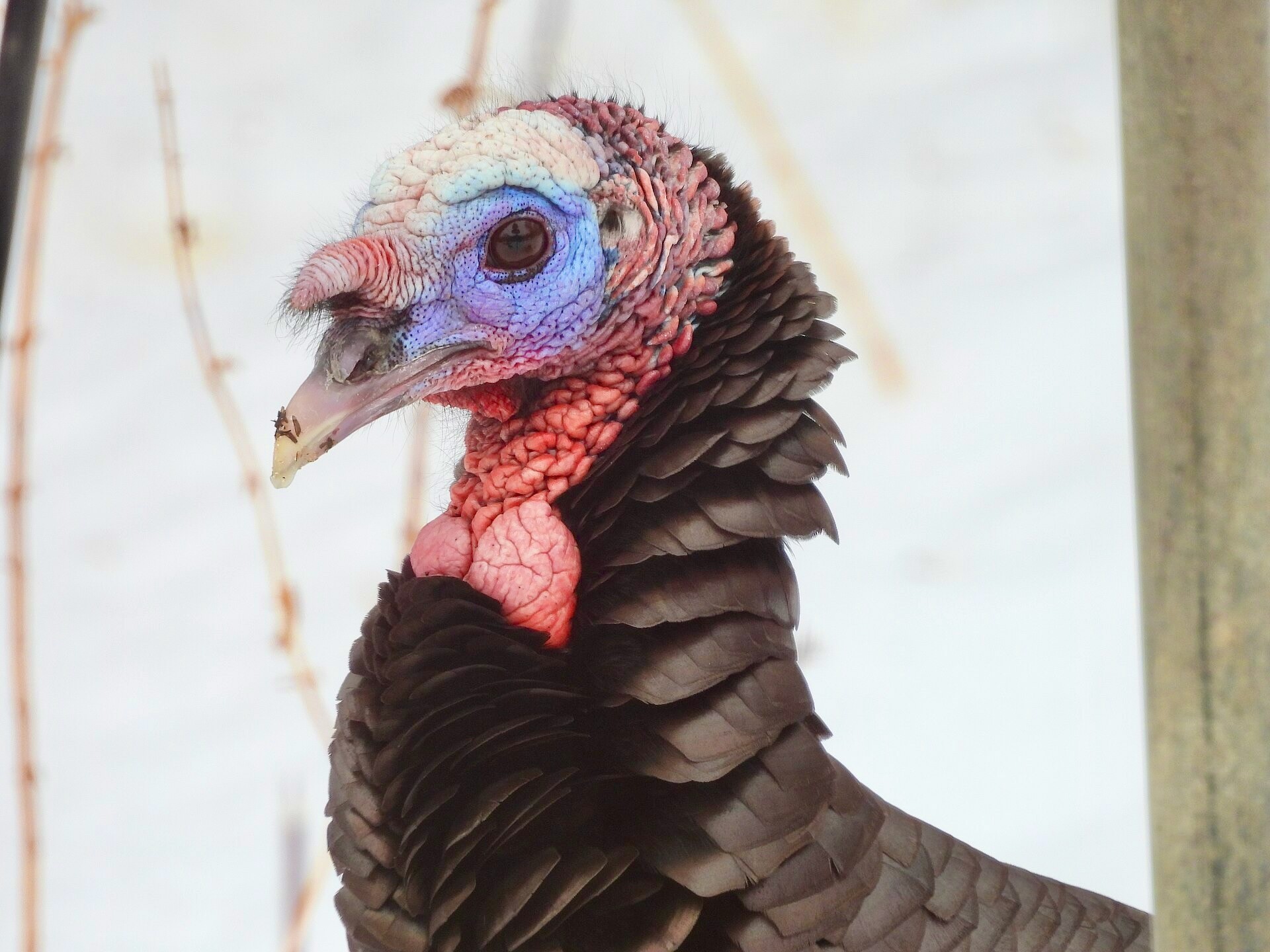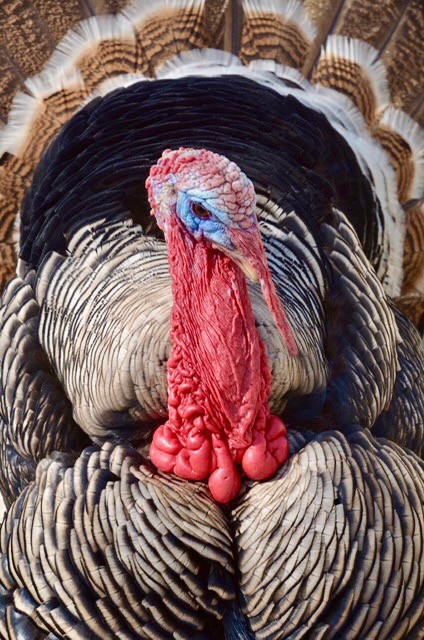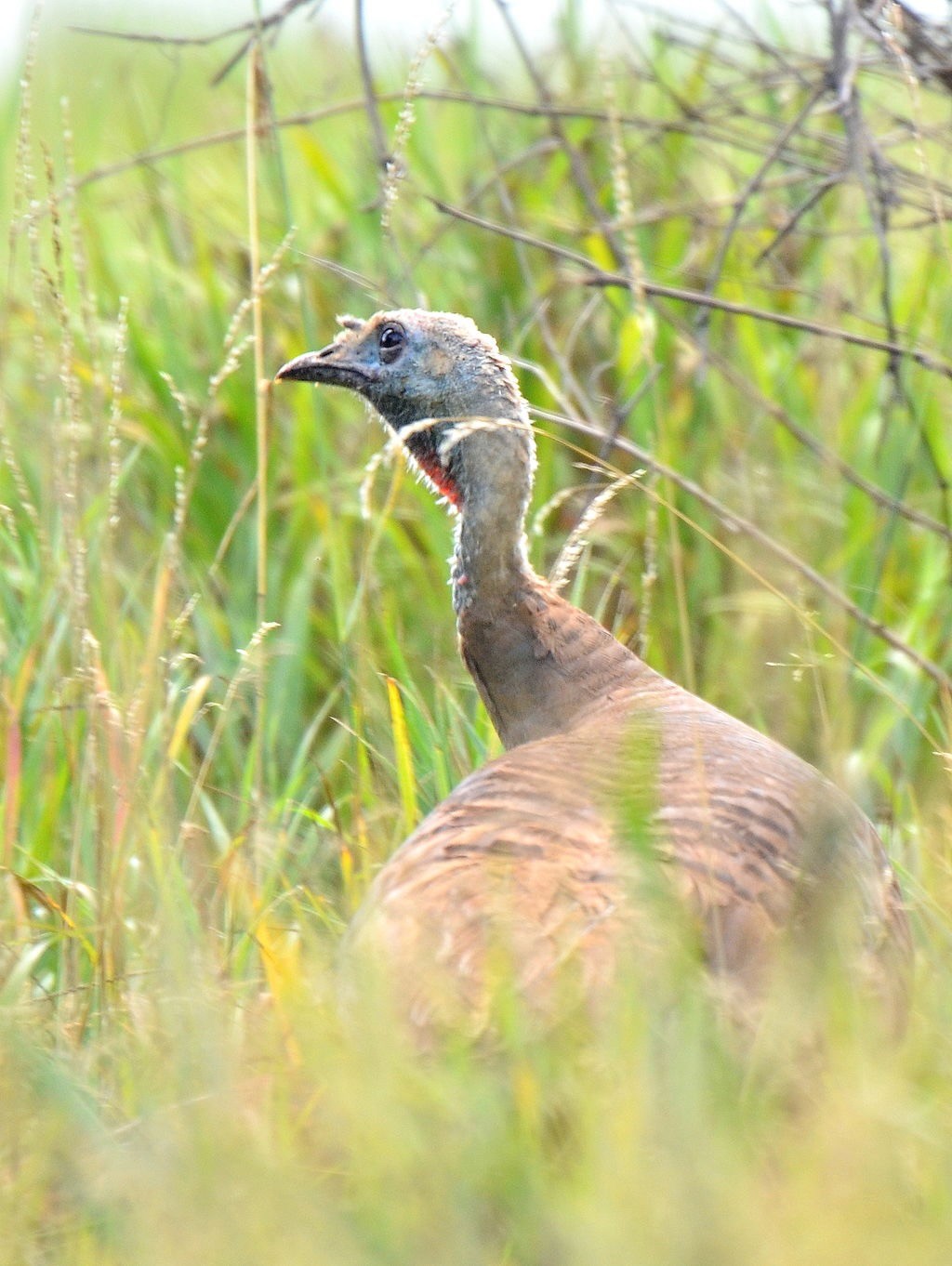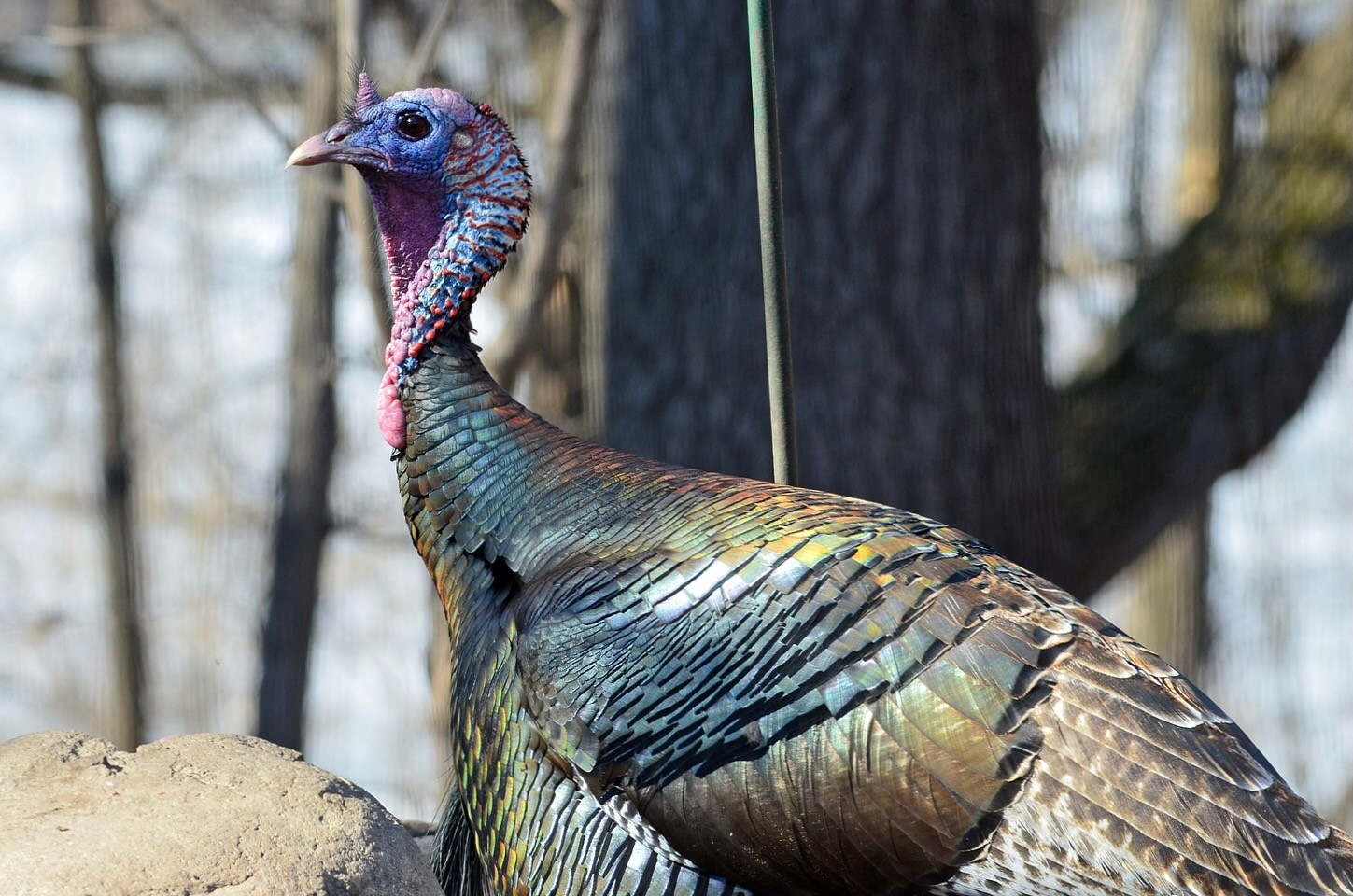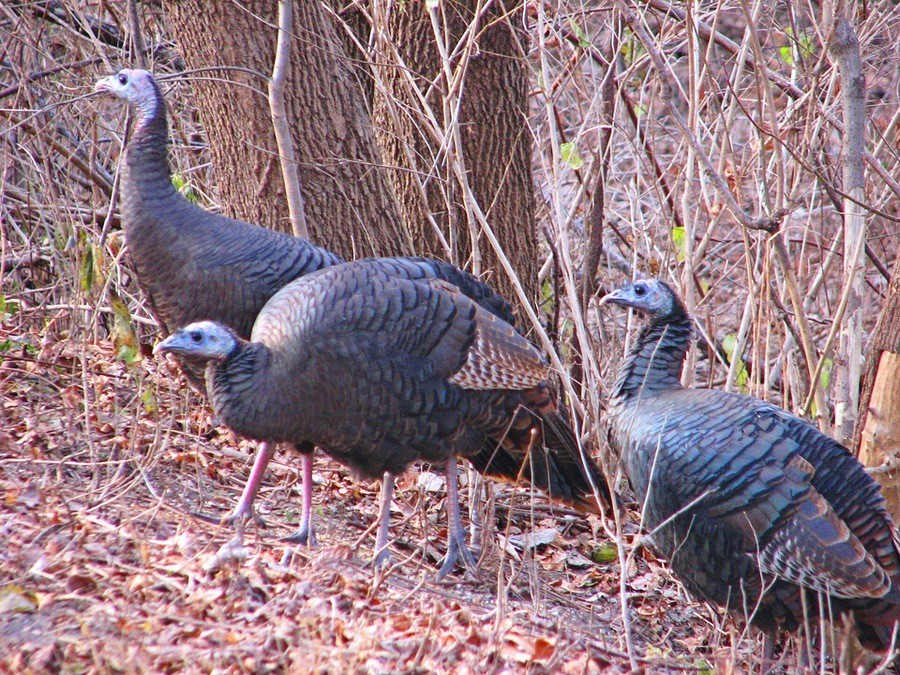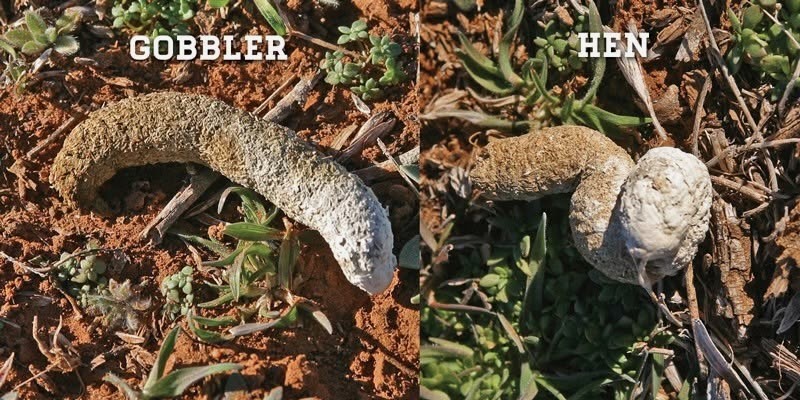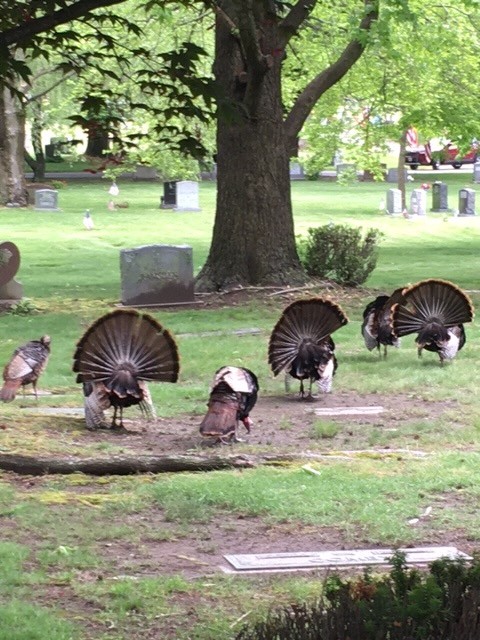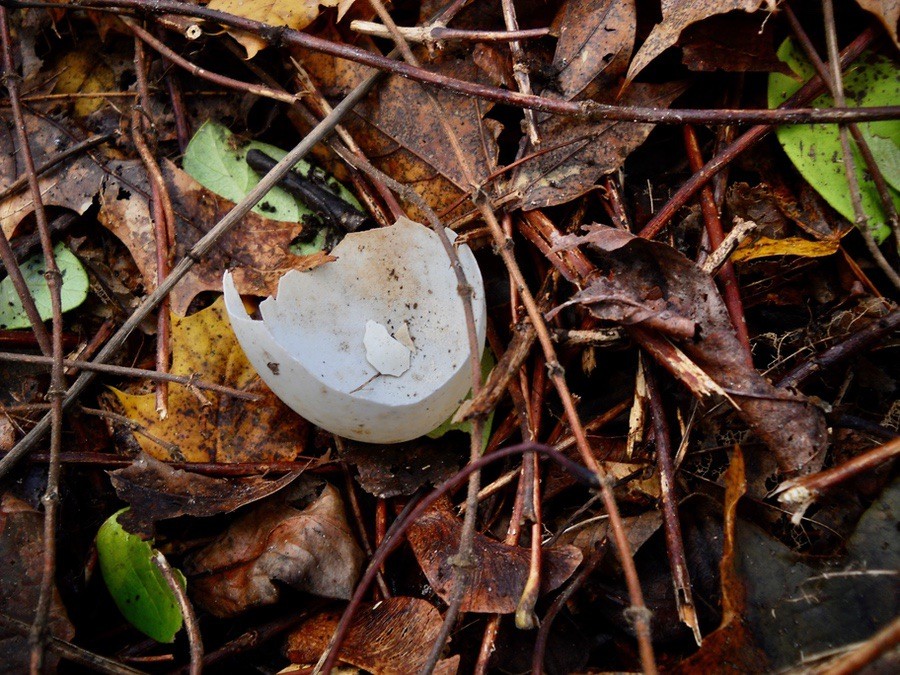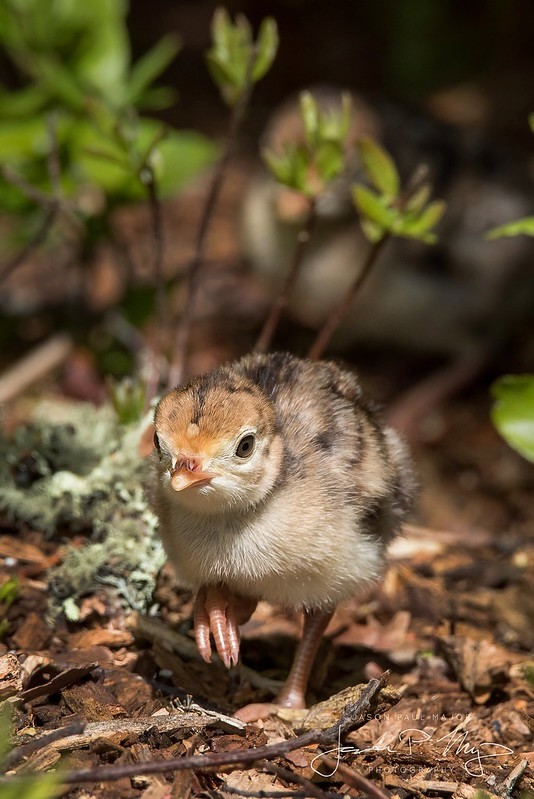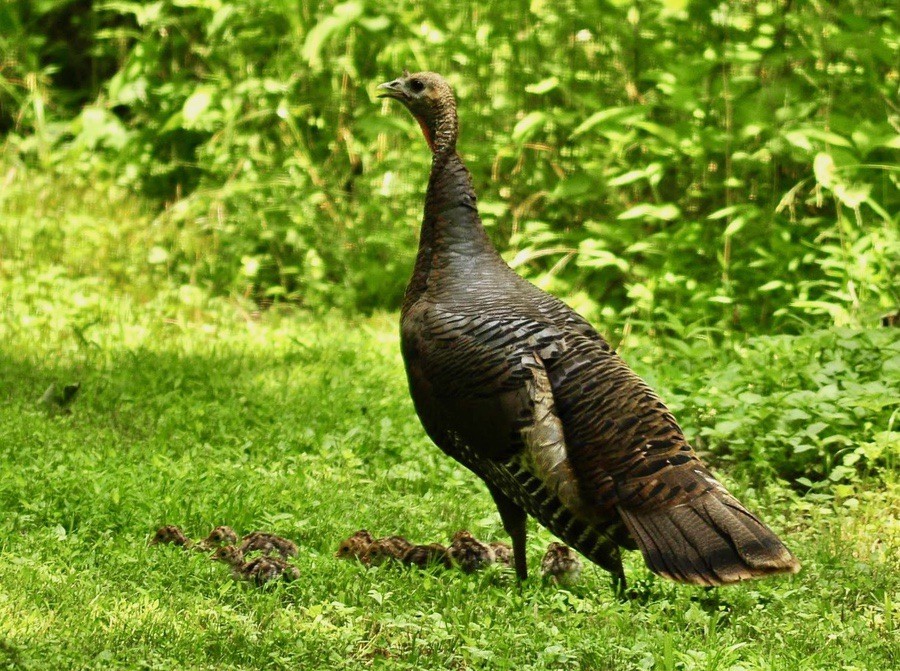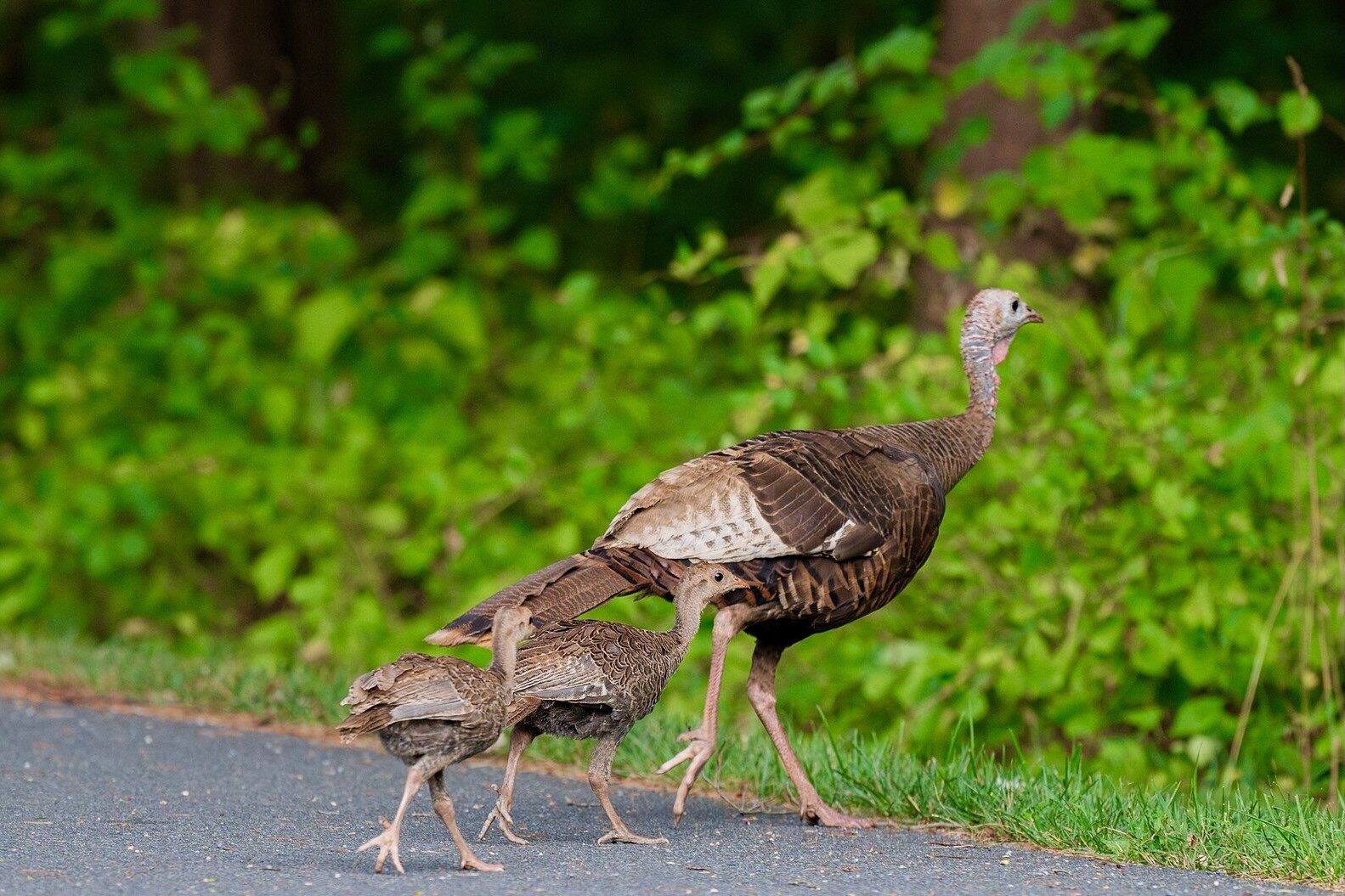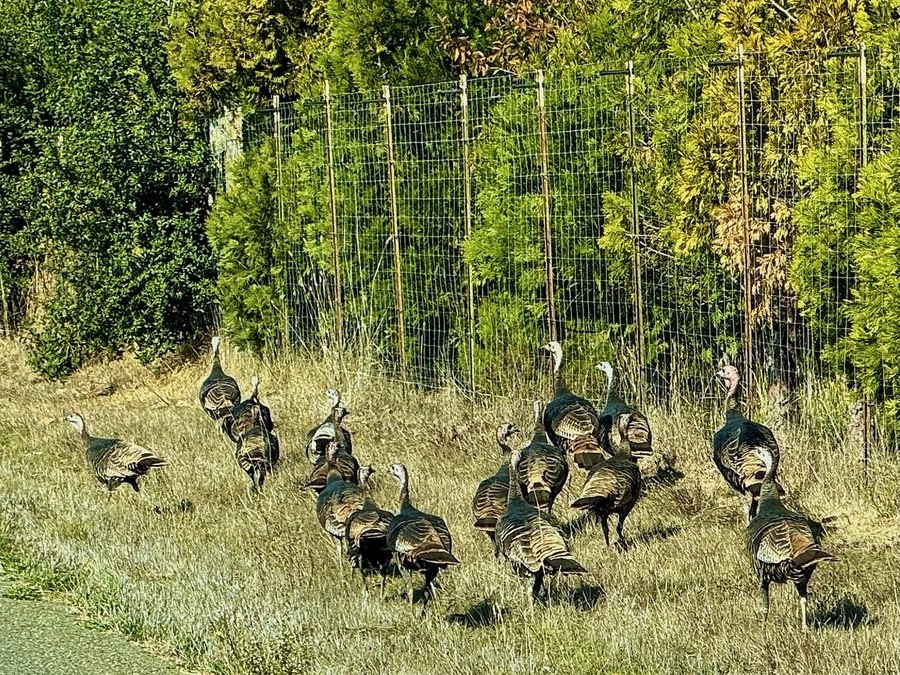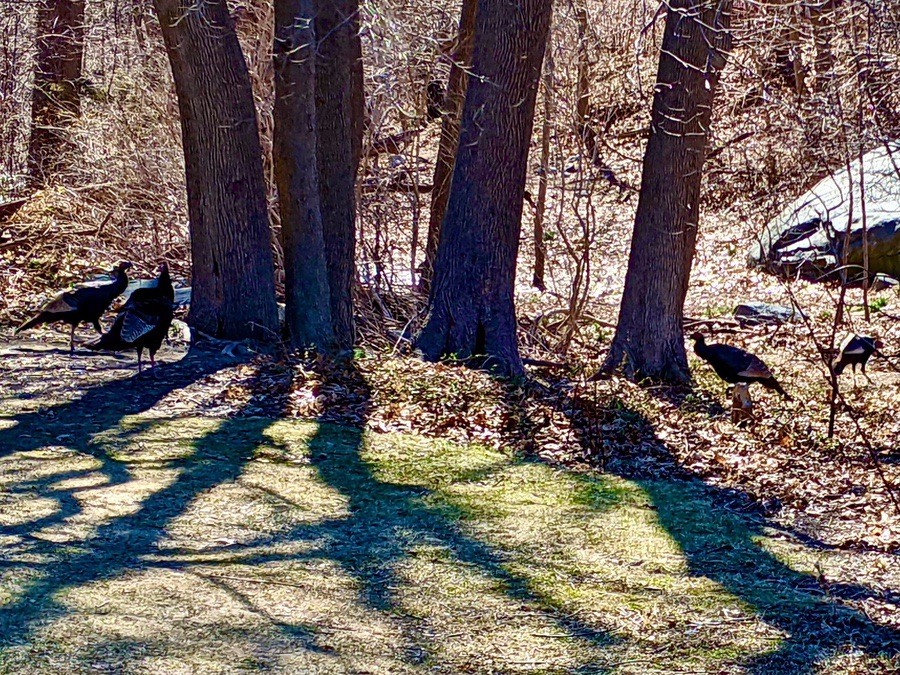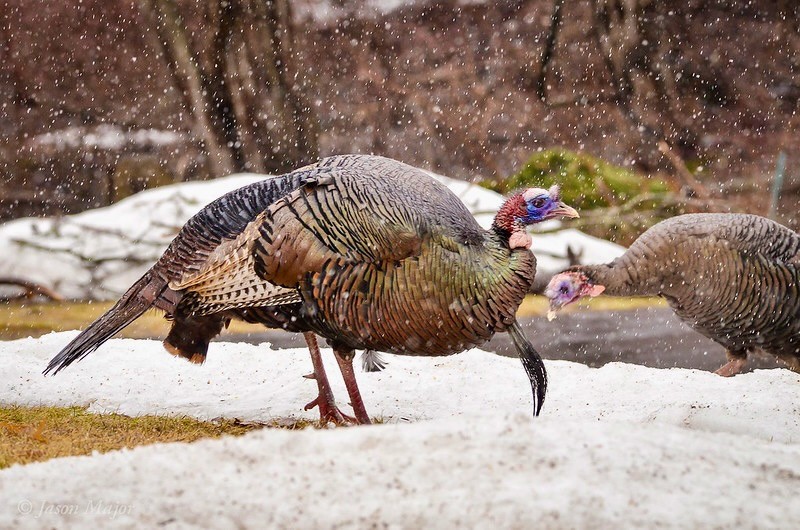Wild Turkey
The Wild Turkey has only been seen or heard a handful of times since records began for Salter Grove in 2002. In November, 2020, a fragment of a turkey egg shell was found while a dense patch of Japanese Honeysuckle was cleared from South Lawn. Five non-breeding birds was once seen foraging in the northern portion of the pond clearing in March, 2021. The most recent sighting was dated mid-July of 2025.
The low abundance at Salter Grove is to be expected since the small and sparse woodland of the park contains only a small number of acorn-producing black oaks.
Throughout its range, the preferred habitat of this wide-spread and delicious game species is oak-hickory or oak forest where its favorite food of acorns and hickory nuts would be abundant. However, the park does offer other acceptable food items such as berries, leaf buds, seeds, and insects.
It is not obvious where the Wild Turkeys sighted at the park are coming from since there is suburban housing on three sides and the Providence River on the fourth. Males displaying to females in the spring, and small foraging flocks during autumn have been reported at Pawtuxet Memorial Park less than a mile away, but they do not appear to be residents of the cemetery. Wild Turkeys have seasonally varying home ranges of from 400 to 2,000 acres so the origin of birds sighted at Salter Grove will remain a mystery.
Although it was abundant in North America during colonial times, over-hunting and conversion of forests to agricultural lands over two centuries led to a great decline. By the early 1900's wild birds were found only in remote or inaccessible pockets of forest.
The alarmingly low national estimate of only 30,000 birds triggered restoration programs. Since the 1940's, turkeys from stable populations were trapped and then relocated to suitable habitats across the United States, and Canada. Estimates for the mid 2020's suggest a population rebound to over 6.5 million. Success!
Wild Turkeys were historically common all over New England but were extirpated by the late 1800's. Its restoration in Rhode Island started in 1980 with the relocation of wild birds from New York, Pennsylvania and Vermont to suitable habitats around the state. Wild Turkeys now occur beyond the points of introduction, spilling into the suburban landscape. Numbers appear sufficiently robust to provide hunting opportunities in both spring and fall.
For more information:
https://www.allaboutbirds.org/guide/Wild_Turkey/
https://www.audubon.org/field-guide/bird/wild-turkey
https://en.wikipedia.org/wiki/Wild_turkey
https://www.birdsbybent.com/////ch61-70/wturkey.html
https://dec.ny.gov/nature/animals-fish-plants/wild-turkey/habitat-management#:~:text=A
https://dem.ri.gov/sites/g/files/xkgbur861/files/2024-12/turkey-survey-24.pdf
Clarkson, C. E., Osenkowski, J. E., Steen, V. A., Duhaime, R. J., and Paton, W.C. (2023) The Second Atlas of Breeding Birds in Rhode Island. Rhode Island Department of Environmental Management Division of Fish and Wildlife. pp. 80-81.
Howe, Jr., R.H. and Sturtevant, E. (1899) The Birds of Rhode Island. p. 88.

